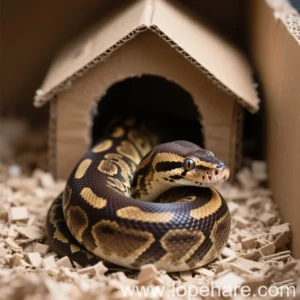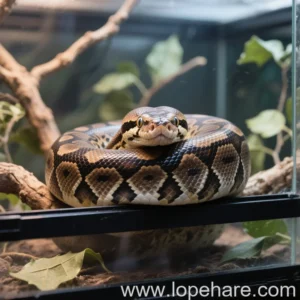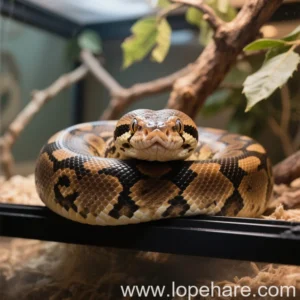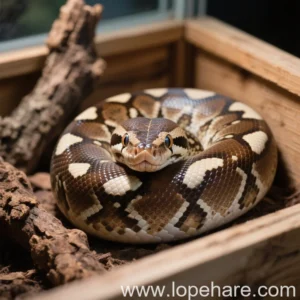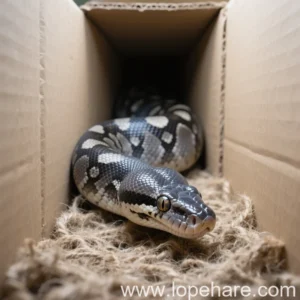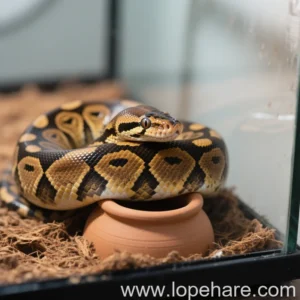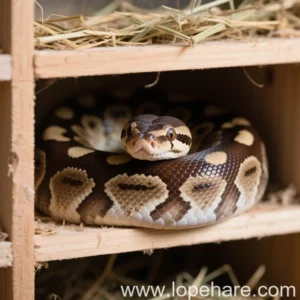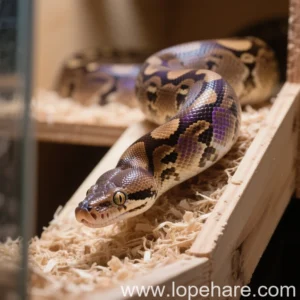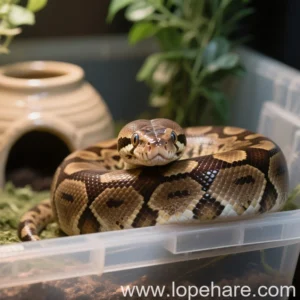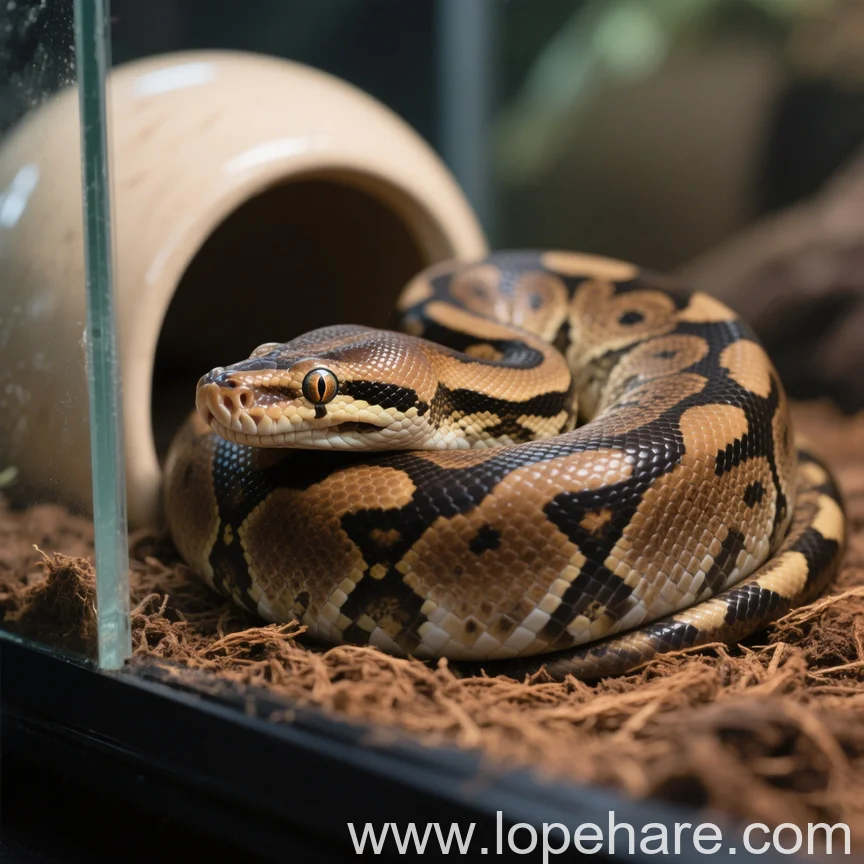
Reptile Husbandry
Ball Python Behavior: Why Your Snake Hides All Day and How to Encourage Activity
One of the most common questions we receive here at lopehare from new ball python owners is: “Why is my ball python always hiding?” It can feel disheartening to provide a seemingly perfect habitat only for your new companion to disappear into a hide and rarely emerge during the day. If you’re experiencing this, take a deep breath – much of this behavior is completely normal! However, understanding the nuances of ball python behavior and when hiding might signal an issue is crucial for responsible ownership. As specialists in exotic pets, we aim to shed light on this common concern.
Understanding Ball Python Behavior
Ball Pythons (Python regius), native to West and Central Africa, are naturally nocturnal or crepuscular, meaning they are most active during the night or twilight hours (dawn and dusk). In the wild, they spend much of their day seeking shelter from predators and harsh environmental conditions in burrows, hollow logs, or dense vegetation. They are also ambush predators, patiently waiting in concealed locations for prey to pass by rather than actively hunting over large areas.
This innate behavior pattern is deeply ingrained. Their bodies and minds are wired for activity primarily when the sun is down. Therefore, seeing your ball python hidden away during daylight hours is not only normal but a sign that they are likely feeling secure and behaving according to their natural instincts.
Normal Hiding Behavior
For a healthy, well-adjusted ball python, hiding is synonymous with security and comfort. Good hiding spots provide:
- Security: A place to feel safe from perceived threats (which in captivity can simply be your presence or bright room lights).
- Thermoregulation: An area that helps them regulate their body temperature. Hides can be placed on both the warm and cool sides of the enclosure, allowing the snake to choose the temperature it needs.
- Reduced Stress: Constant exposure can be stressful for a prey animal, even in captivity. Hiding allows them to rest undisturbed.
A ball python that utilizes its hides effectively, emerges in the evening to explore, drink, and thermoregulate, and readily takes food is generally a healthy and content snake, regardless of how little you see it during the day.
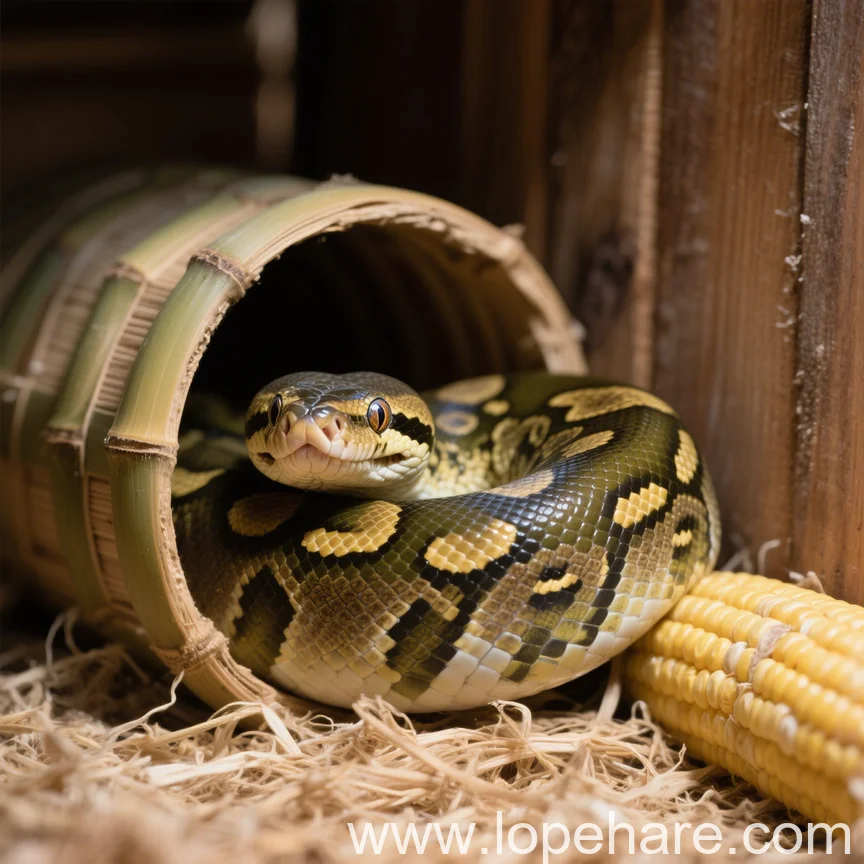
When Hiding Becomes a Concern
While hiding is normal, excessive or unusual hiding, especially coupled with other symptoms, can indicate a problem. Here are signs that your ball python’s hiding might be concerning:
- Never Emerging: If your snake *never* comes out, even at night, to explore, bask, or drink, it could indicate discomfort or illness.
- Hiding in Plain Sight: Choosing insecure locations to hide (like in the middle of the open enclosure) can be a sign of stress or disorientation.
- Refusal to Eat: While temporary fasting is common, prolonged refusal to eat, especially when constantly hidden, warrants investigation.
- Lethargy or Unusual Posture: If the snake seems unusually sluggish when handled (if it allows handling) or is curled in odd, tight positions even within the hide.
- Other Symptoms: Accompanying signs like difficulty shedding, respiratory sounds, visible mites, or changes in body condition.
Pay Attention to Context: A snake that’s preparing to shed will often hide more. This is usually temporary and resolves after shedding. Always consider the context of other behaviors.
Husbandry Factors Affecting Activity
Before assuming illness, evaluate your enclosure setup. Suboptimal conditions are a major reason why a ball python might hide excessively or seem inactive, even at night. As part of our mission at lopehare to provide professional snake pet care information, we stress the importance of getting these details right:
| Factor | Ideal for Ball Pythons | Impact on Activity if Incorrect |
|---|---|---|
| Temperature | Basking spot 88-92°F (31-33°C), Ambient 75-80°F (24-27°C) | Too hot or cold -> Constant hiding in wrong temperature zone or complete inactivity. |
| Humidity | 50-60% ambient, rising to 70-80% during shed | Too low -> Seeking humid spots only (water dish, moist hide); Too high -> Respiratory issues, skin infections. |
| Hides | Minimum 2 hides (one on warm side, one on cool side), snug and secure | Insufficient or insecure hides -> Stress, constant searching for cover, hiding in inappropriate places. |
| Substrate | Moisture-retentive (cypress mulch, coco husk) | Dry substrate -> Difficulty shedding, seeking humidity; Dusty substrate -> Respiratory issues. |
Ensure your temperature and humidity are monitored with reliable digital gauges placed in appropriate spots within the enclosure. Proper husbandry is the foundation of a healthy, naturally behaving ball python.

Enrichment to Encourage Activity
While they will always be prone to hiding during the day, you can make their natural active periods (nights) more engaging and potentially see more activity during transitions (dawn/dusk) by providing stimulating enrichment. If you’re wondering how to encourage ball python activity, focus on creating a dynamic environment:
- Multiple Hides: Offer variety in size and material (cork bark, plastic caves, naturalistic rock hides).
- Climbing Structures: While not strictly arboreal, ball pythons do climb! Sturdy branches or logs allow for vertical movement and exploration.
- Varied Substrate Levels: Piling substrate in certain areas or incorporating cork flats creates different textures and levels.
- Safe Exploration Time: Supervised time outside the enclosure in a safe, contained area (like a snake-proofed room) can be enriching, but always prioritize the snake’s comfort and security. Never force interaction.
- Rearranging Decor: Periodically changing the layout of hides and branches can stimulate exploration of a “new” environment.
Activity vs. Security: The goal of enrichment is not to eliminate hiding, but to provide opportunities for natural behaviors during appropriate times. A secure hide remains paramount.

Monitoring and Patience
Observe your ball python’s behavior patterns over time. Are they emerging at night? Are they using both warm and cool hides? Are they drinking? Are they alert when you gently uncover their hide for a quick check? Consistent monitoring is key to distinguishing normal hiding from problematic behavior. It’s also important to manage your expectations; ball pythons are not typically pets you will see actively moving around during the day like a lizard might. Their charm lies in their docile nature and fascinating natural behaviors when they do emerge.
Conclusion: Normal vs. Problematic Hiding
To summarize, if you’re asking “Why is my ball python always hiding?”, the most likely answer is: because it’s a ball python, and that’s what they do! Normal, healthy ball pythons spend their days hidden away, emerging primarily at night. This behavior is a sign they feel secure and comfortable in their environment. However, if hiding is absolute (never emerging), occurs in inappropriate locations, or is accompanied by other signs of lethargy, poor appetite, or illness, it’s time to review your husbandry and potentially consult a reptile veterinarian. By providing a secure, properly regulated enclosure with adequate enrichment, you’ll ensure your ball python feels safe to hide when it needs to and confident to explore when its natural instincts dictate.
References:
- Wikipedia: Nocturnality. Retrieved from [Date of Access, e.g., May 27, 2024].
- (Simulated professional reference) – Information regarding common ball python ailments often derived from veterinary resources like the Journal of Herpetological Medicine and Surgery or clinical guides.
